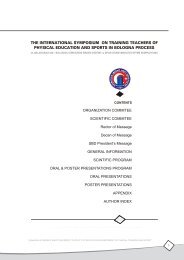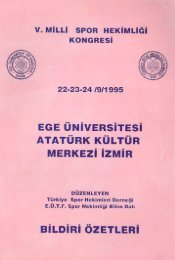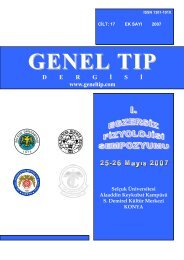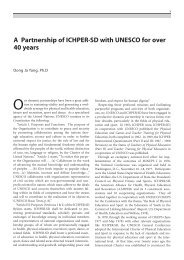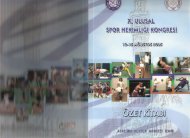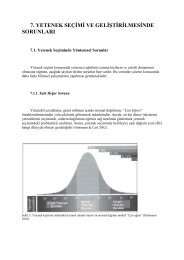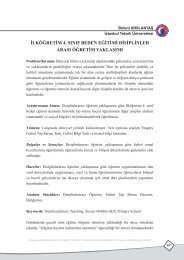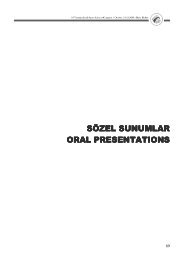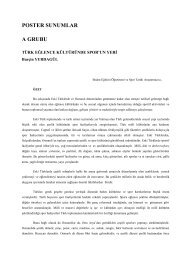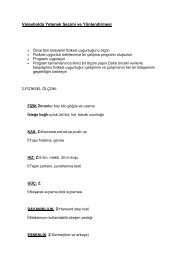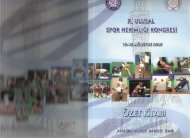KARDÄ°YORESPÄ°RATUVAR EGZERSÄ°Z TESTLERÄ° ... - Spor Bilim
KARDÄ°YORESPÄ°RATUVAR EGZERSÄ°Z TESTLERÄ° ... - Spor Bilim
KARDÄ°YORESPÄ°RATUVAR EGZERSÄ°Z TESTLERÄ° ... - Spor Bilim
Create successful ePaper yourself
Turn your PDF publications into a flip-book with our unique Google optimized e-Paper software.
Heart Rate (beats.min -1 )7.ULUSLARARASI SPOR BİLİMLERİ KONGRESİ27-29 EKİM 2002KONGRE - PANELLERFigure 1. Heart rate responses to soccer drills (Drill A, head tennis; Drill B, 3 v 3; Drill C, 2 v 2 (reproduced fromGregson and Drust, 2000).250200123 beats.min -1 160 beats.min -1 172 beats.min -115010050Drill A Drill B Drill C0Time (Minutes)Long term planning of soccer training should be focused around two distinct phases, pre-season and thecompetitive season. The focus during pre-season training is on improving the physical condition of players to alevel which will match the demands of the game. The pre-season period will initially be characterised by lowintensity aerobic training and specific muscle work. As pre-season progresses these activities will be replacedby more intense exercise that taxes both the aerobic and anaerobic energy systems in addition to regularmatch-play. This gradual transition between low and high intensity exercise helps reduce the risk of injury andprovides time for the body to adapt to the demands of training.The schedule of games imposed on players in today‘s competitive season makes the planning of fitnesstraining very difficult. The aim of training during this phase is to primarily maintain, if not improve, the fitnessthat has been developed during the pre-season period. High intensity aerobic training and anaerobic trainingshould be provided a high priority during the competitive season though some consideration should also begiven to performing low intensity aerobic training to maintain endurance.ReferencesBangsbo, J (1994) The physiology of soccer – with special reference to intense intermittent exercise. Acta PhysiologicaScandinavica, 151, Suppl. 619.Gregson, W. and Drust, B. (2000) The physiology of football drills. Insight, 4, 48-50.Reilly, T. and Bangsbo, J. (1998) Anaerobic and aerobic training. In Training in <strong>Spor</strong>t (ed. B. Elliott), pp. 351-409.Chichester: John Wiley.362



